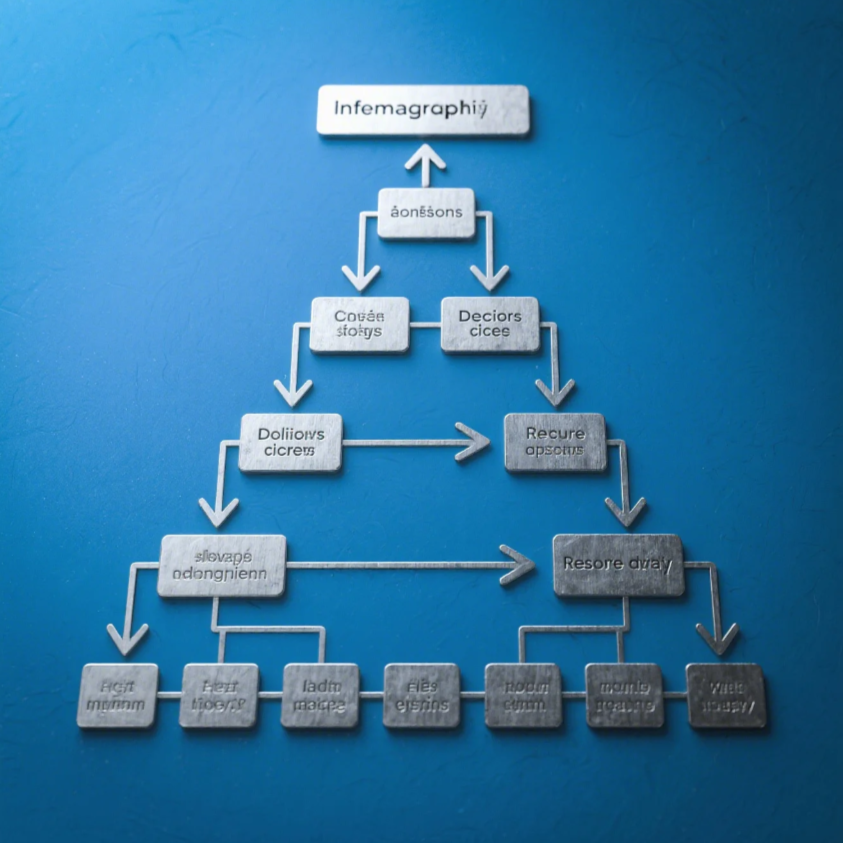What is chain of command in management?

The chain of command in management is a fundamental concept in organizational structure that outlines the hierarchy of authority within an organization. It defines who reports to whom and ensures that communication flows smoothly throughout the organization.
Snippet paragraph: The chain of command establishes the hierarchy of authority in an organization, ensuring clear communication and defined reporting lines.
Let’s explore what the chain of command means in management and its importance in creating an organized and efficient workplace.
What is the chain of command?
The chain of command is the formal line of authority, communication, and responsibility within an organization. It defines the roles and responsibilities of employees at different levels of the hierarchy, establishing who reports to whom and who is responsible for making decisions. The chain of command ensures that instructions are passed down from top management to lower-level employees and that feedback and reports flow back up to leadership.
Snippet paragraph: The chain of command defines the formal hierarchy of authority in an organization, ensuring clarity in reporting relationships and decision-making.

Dive-Deeper paragraph:
In a well-structured organization, the chain of command is essential for maintaining order and efficiency. It helps clarify the roles and responsibilities of each individual in the organization. For example, in a corporate setting, the CEO is at the top of the chain, followed by vice presidents, directors, managers, and employees. Each level of the chain has specific duties and is responsible for ensuring that their team’s goals align with the organization’s overall objectives.
The chain of command also ensures that information is passed down in a controlled manner and that decisions are made at appropriate levels. This clarity helps avoid confusion and reduces the chances of miscommunication. However, it’s important for organizations to maintain flexibility within the chain of command to adapt to changing business conditions.
Key Features of the Chain of Command:
| Feature | Description |
|---|---|
| Hierarchical Structure | Clear levels of authority and responsibility |
| Reporting Relationships | Employees know who they report to and who reports to them |
| Clear Communication | Ensures that instructions and feedback flow in an organized manner |
While the chain of command is vital for maintaining order, organizations must ensure that it doesn’t become too rigid, as it may hinder creativity and decision-making flexibility.
What is the chain of command for managers?
The chain of command for managers refers to the hierarchical reporting relationships between managers and their subordinates, as well as between managers at different levels within the organization. It outlines the flow of authority from top management to middle management and down to lower-level supervisors and employees.
Snippet paragraph: The chain of command for managers defines the hierarchical relationships and authority flow from senior leaders to middle and lower management.

Dive-Deeper paragraph:
In most organizations, the chain of command for managers begins with top-level executives, such as the CEO or president, who set the company’s overall strategy and direction. Beneath them are the vice presidents and directors, who manage specific departments or functions. These individuals are responsible for ensuring that their teams meet departmental goals and align with the company’s overall objectives.
At the next level, middle managers oversee day-to-day operations and supervise lower-level managers and employees. These managers ensure that tasks are executed effectively and that their teams have the resources and support they need. Finally, at the bottom of the chain, supervisors or team leaders manage the front-line employees who carry out the tasks that contribute to the company’s success.
The chain of command for managers helps establish clear authority and responsibility, allowing organizations to function smoothly and efficiently. It ensures that managers at all levels have the necessary support to make decisions and guide their teams toward success.
Example of Chain of Command for Managers:
| Level | Role |
|---|---|
| Top Management | CEO or President |
| Middle Management | Vice Presidents, Directors |
| Lower Management | Managers, Supervisors |
| Front-line | Team Leaders, Employees |
By clearly defining reporting relationships and authority at each level, the chain of command enables managers to effectively lead their teams and make strategic decisions.
What is the chain of command and span of management?
The chain of command and span of management are two interrelated concepts that shape an organization’s structure. While the chain of command defines the hierarchical flow of authority and responsibility, the span of management refers to the number of subordinates a manager can effectively supervise. These two concepts work together to determine how an organization is structured and how communication and decision-making are handled.
Snippet paragraph: The chain of command defines authority hierarchy, while the span of management determines how many employees a manager can effectively oversee.

Dive-Deeper paragraph:
The chain of command sets the structure for who reports to whom within the organization. It is essential for creating clarity in roles, responsibilities, and communication. For example, a senior executive may have several layers of middle managers below them, each responsible for different areas of the business. These relationships ensure that decision-making and communication are streamlined.
On the other hand, the span of management addresses the number of direct reports a manager can effectively oversee. In a wide span of management, a manager has many subordinates to supervise, whereas in a narrow span, a manager oversees only a few employees. The span of management influences the effectiveness of the chain of command because a manager with too many direct reports may struggle to communicate effectively or provide adequate support to each team member.
For example, a company with a narrow span of management might have several layers of managers between top leadership and front-line employees, allowing for more control but potentially slowing down decision-making. Conversely, a wider span of management can lead to faster decision-making but may dilute the manager’s ability to provide personalized guidance.
Relationship Between Chain of Command and Span of Management:
| Concept | Description |
|---|---|
| Chain of Command | Defines the hierarchical flow of authority |
| Span of Management | Determines the number of employees a manager oversees |
Together, the chain of command and span of management help define how an organization communicates, makes decisions, and ensures accountability.
What does it mean to break the chain of command?
Breaking the chain of command refers to bypassing the established hierarchy and going directly to a higher authority to make decisions or communicate. This usually occurs when an employee or manager feels that the chain of command is not functioning effectively or when urgent issues arise that require immediate attention. While it can sometimes be necessary, breaking the chain of command often leads to confusion, inefficiency, or resentment among other employees.
Snippet paragraph: Breaking the chain of command involves bypassing the established reporting structure, which can create confusion and disrupt organizational efficiency.

Dive-Deeper paragraph:
Breaking the chain of command can disrupt the flow of communication and decision-making within an organization. For example, if an employee bypasses their direct supervisor and approaches the CEO with an issue, it may undermine the authority of the supervisor and cause confusion regarding roles and responsibilities. Additionally, it may create tension among team members who feel that the proper channels have not been followed.
However, there are certain situations where breaking the chain of command may be justified. For instance, in an emergency or crisis, it may be necessary to bypass the usual hierarchy to quickly resolve an issue. In such cases, clear communication and transparency are essential to avoid misunderstandings and ensure that the organization continues to function effectively.
Consequences of Breaking the Chain of Command:
| Consequence | Description |
|---|---|
| Confusion | Bypassing authority can lead to unclear decision-making and roles |
| Tension | Employees may feel undermined or disrespected |
| Inefficiency | Disrupts the organized flow of communication and decision-making |
While breaking the chain of command can sometimes be unavoidable, it should be done carefully and with consideration for the impact it may have on organizational structure and relationships.
Conclusion
The chain of command is an essential component of organizational structure, defining reporting relationships and ensuring clear communication. It works alongside the span of management to create an efficient hierarchy, but it is important for organizations to maintain flexibility to avoid potential disruptions in workflow.







